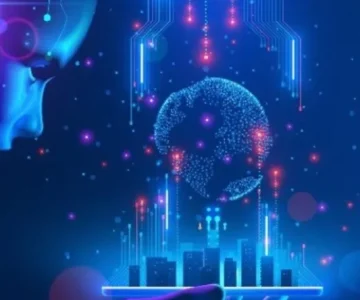Artificial Intelligence (AI) is no longer just a buzzword; it’s rapidly transforming industries across the globe, and education is no exception. As AI technology continues to infiltrate classrooms, there’s much to discuss regarding its potential to enhance or disrupt educational experiences. While AI brings many exciting opportunities, it also comes with its own set of challenges. Let’s explore how AI could reshape education, from personalized learning to its ethical implications.
Personalized Learning: Tailoring Education for Every Student
One of AI’s most significant contributions to education is its ability to provide personalized learning experiences. Unlike traditional teaching methods, which often adopt a one-size-fits-all approach, AI-powered platforms can adjust lessons to suit each student’s unique learning style, pace, and strengths. For students who may struggle with certain concepts, AI can identify knowledge gaps and provide additional support. On the other hand, for fast learners, it can present more advanced challenges to keep them engaged.
This personalized approach ensures that every student receives the support they need, making education more efficient and effective. Whether it’s helping a student grasp a difficult math concept or advancing a gifted learner, AI can fine-tune lessons for maximum impact.
Expanding Access to Education: A Global Classroom
AI also holds the potential to democratize education. With AI technologies, educational resources can be digitized and made accessible to anyone, regardless of location. A student in a remote village can potentially access the same quality of educational content as someone in a bustling city. AI-powered tools like real-time translation and text-to-speech features can break down barriers of language and disability, ensuring that all learners, regardless of background or ability, can participate in the learning process.
By removing physical and geographical constraints, AI can open up a world of learning to students who may otherwise lack the resources or opportunities for formal education.
Less Paperwork, More Engagement: AI and Teacher Support
AI can also significantly lighten the load for educators. Grading assignments, organizing lesson plans, and tracking student progress are time-consuming tasks that often take teachers away from direct student engagement. AI can automate many of these routine tasks, giving teachers more time to focus on what truly matters: teaching and interacting with their students.
Moreover, AI can provide valuable insights into student performance. By analyzing data, AI can highlight patterns in student learning, helping educators identify areas where students are struggling and adjust their teaching methods accordingly. This level of insight can lead to more targeted and effective instruction.
Challenges of AI Integration: Data Privacy and the Human Element
Despite its many advantages, the integration of AI into education does present challenges. One major concern is data privacy. AI systems require large amounts of data to function effectively, and with that comes the responsibility of protecting sensitive student information. Schools and educational institutions must ensure that proper safeguards are in place to prevent data breaches and misuse of personal information.
Another challenge is the potential loss of the human aspect in teaching. While AI can provide personalized interactions and feedback, it cannot replicate the empathy, emotional intelligence, and understanding that human educators offer. This is especially important for younger students, who rely on positive, nurturing environments to develop both academically and emotionally.
Addressing the Digital Divide
The promise of AI-driven education also raises concerns about equity. While AI can make learning more accessible, it could also exacerbate the digital divide if not managed carefully. Students in underprivileged areas may lack the necessary technology or internet access to benefit from AI-powered education, which could widen the gap in educational outcomes between the wealthy and the disadvantaged. Addressing this disparity is essential for ensuring that AI fulfills its potential as an equalizer, rather than deepening existing inequalities.
Looking Ahead: AI as an Empowering Tool for Educators and Students
The future of AI in education looks promising, but it’s important to recognize that AI will not replace teachers. Instead, it will serve as a powerful tool that empowers educators. By using AI to analyze data and provide personalized learning experiences, teachers will have more time to focus on the emotional and developmental needs of their students. In this way, AI can enhance the teaching process, not replace it.
Furthermore, AI has the potential to predict educational trends and outcomes, helping policymakers design better strategies for improving education systems. With the help of AI, governments could tailor educational policies to meet the unique needs of different regions, ensuring that all students have access to the best possible education.
AI’s Potential for All Learners, Including Those with Special Needs
One of the most exciting possibilities for AI in education lies in its ability to support students with special needs. Adaptive learning systems can be developed to cater to a wide range of abilities, offering tailored experiences that promote inclusivity. For students with disabilities, AI can provide specialized tools and resources to help them succeed academically, making education more accessible than ever before.
The Bottom Line: A Future of Education Powered by AI
AI has the potential to transform the educational landscape, making learning more personalized, accessible, and inclusive. However, the successful integration of AI into education requires careful consideration of its ethical implications, including data privacy, teacher-student relationships, and equitable access.
When used responsibly, AI can become a powerful tool that enhances education for all students. It can provide personalized support, ease the burden on teachers, and break down barriers to access. As we move forward, it’s essential that we focus on creating a balance where AI complements human teaching, ensuring that all students have the opportunity to thrive in a more connected, equitable educational environment.





